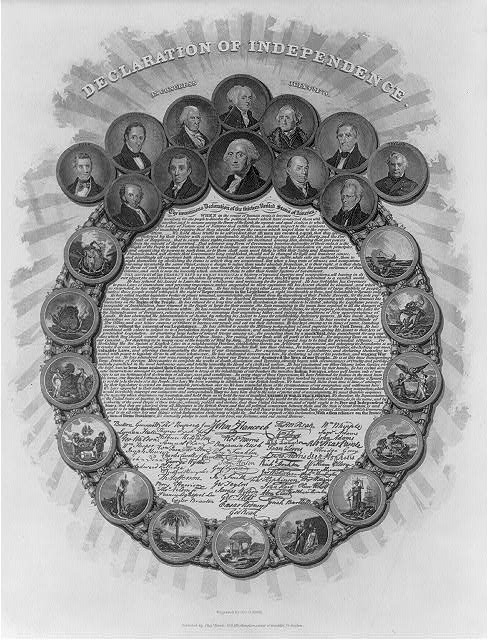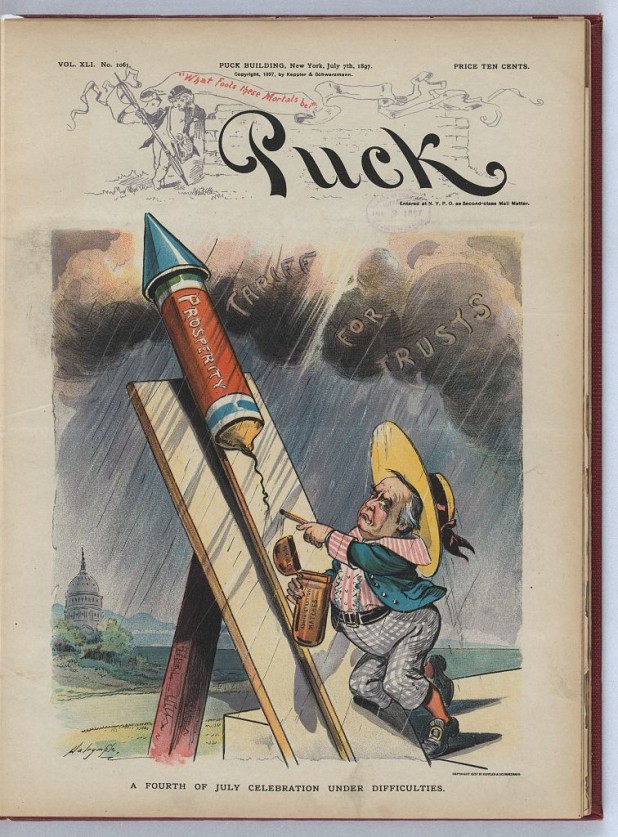As the Fourth of July approaches, many brands are planning Independence Day-related campaigns and promotions, hoping to produce visual content that pops amid the impending social media fireworks. And while stock image repositories and free image sources are an easy, go-to solution for creatives, marketers and bloggers alike, they alone may not be enough to help your content stand out. Enter the Library of Congress: a treasure trove of incredible historical photos, illustrations, videos and more about America’s history. With more than 158 million items — more than a million of them photos, prints and drawings, accessible via a robust online search tool — the Library is an incredible resource (and not just for Independence Day-related visuals). 
1. Copyright restrictions
The first thing you need to do when consulting the Library is get familiar with its copyright restrictions. We’ve condensed the guidelines into the tips below, but the overarching theme is this: Each image is archived with a set of text-based clues to its history and ownership. Read this text carefully to learn who holds the image’s rights, consider how the image will be used (i.e. fair use or commercial gain) and decide whether to use the image based on those details. The Library acknowledges that some cases are clear-cut while others are pretty muddy. Do your due diligence and remember that it never hurts to have too much information.
2: This means a photo is OK to use
Determining whether to use an image often comes down to the information you can gather about who owns the rights to it. For example, check out this political cartoon that depicts President William McKinley trying to light a Fourth of July rocket: 
- Public domain (e.g. U.S. works published or registered before 1923, or between 1923 and 1963 unless their copyright was renewed),
- Contact information, which allows you to reach out to the rights holder to obtain written permission for use,
- Restrictions information, which spells out acceptable as well as unacceptable uses,
- Credit line lists a U.S. federal agency or military service, neither of which are eligible for copyright protection,
- U.S. copyright registration number, which can be used to search for clues at the U.S. Copyright Office.
3. This means you probably shouldn’t use a photo
On the other hand, there are key phrases that make it clear you are not allowed to use a Library image. Although we won’t display it here (for obvious reasons), this Fourth of July-themed thumbnail sketch depicting President Warren G. Harding is accompanied by the rights advisory, “May be restricted: Information on reproduction rights available in LC P&P Restrictions Statement.” Other cautionary phrases and concepts include:
- “Rights status not evaluated,”
- Blank space/no wording at all (indicating you’ll need to do more homework because the Library hasn’t “received or gathered” pertinent details),
- Unpublished material, meaning the image has been circulated without the approval of the content creator or copyright holder (i.e. more details are needed to determine permissions).
4: Know how you plan to use the image
The Library notes that the more money you will make with a project, the more you are at risk when using the image. On the other hand, a fair-use image might be acceptable for comment, news reporting, teaching, scholarship and research. “If the expected profit is low, rights holder’s loss is low,” the Library concludes. If the visual campaign you are working on is considered a form of advertising, you should be aware of relevant privacy rights, which protect living people from unauthorized uses of their image that are intrusive or embarrassing, and publicity rights, which protect an individual’s right to benefit from commercial value tied to an image.
5. Properly credit the Library
Your credit line should include a reference to the Library of Congress; the specific collection that includes the image; and the negative, transparency or digital ID number. When space is a confining variable, a simple line noting “Courtesy of the Library of Congress” followed by the ID number is acceptable.
6. What’s the worst that could happen?
You probably won’t go to jail for misusing an image. According to the Library, a handful of cease-and-desist orders that have been linked to Library images were dropped after the users requested proof of ownership. “If it is difficult for you to find a rights holder after employing due diligence,” the Library concludes, “it ought to be equally difficult for a claimant to show that a copyright had been secured.” Assuming that you’ve done the necessary research, given the proper credit and prepared a visual to educate rather than to profit, chances are your project is in good shape. The decision to publish lies with you, but thankfully for the American public, access to these stunning historical images is available to everyone. Nate Birt is a multimedia journalist, social media enthusiast and copy editor with experience at a variety of print and digital publications, and a Certified Journalist at the Visually Marketplace. Follow him on Twitter at @natebirt.
